How to Attract and Identify a Clark’s Nutcracker
Updated: Nov. 02, 2023
Meet the Clark's nutcracker. Plus, learn how the birds' food-caching ways help forests, what they sound like and when they nest.
What Does a Clark’s Nutcracker Look Like?
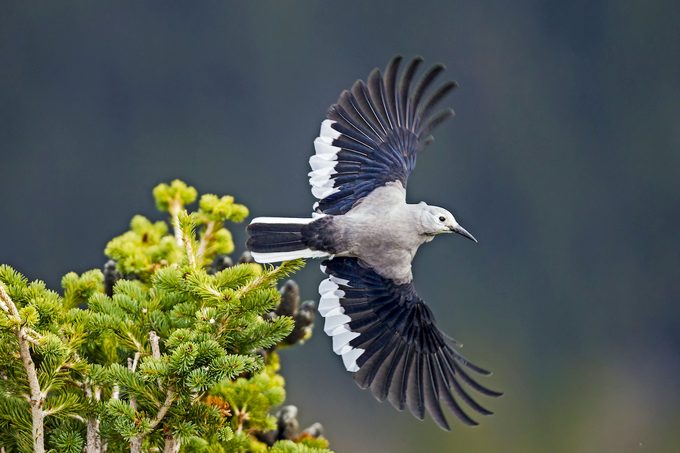
Sometimes mistaken for a Canada jay, which is also predominantly gray, the Clark’s nutcracker has black wings and a distinct spikelike bill. Look for these medium-sized birds across the western United States and in southwestern Canada.
Meet the other super-smart members of the corvid bird family.
By the way, if you think these birds look a bit like woodpeckers, you’re not alone! Capt. William Clark of the Lewis and Clark expedition mistakenly believed the bird was a woodpecker when he first saw it along Idaho’s Salmon River in August 1805, and the birds are named after him.
What Foods Do Clark’s Nutcrackers Eat?
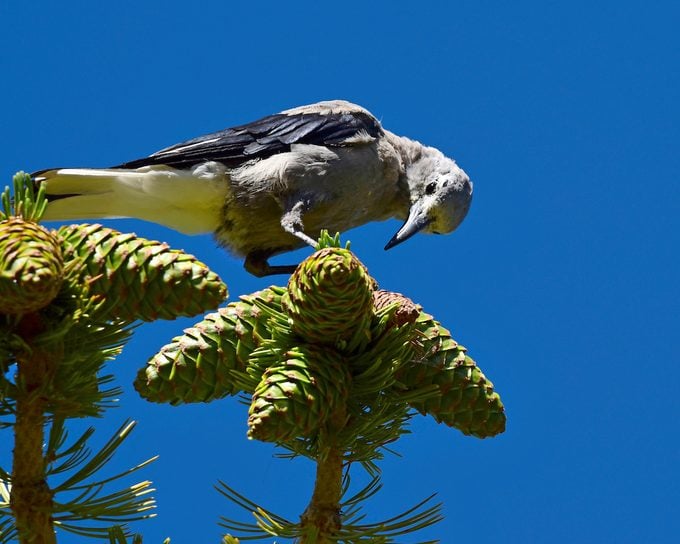
Their long bill is indicative of a preference for pine nuts. “The Clark’s nutcrackers are famous for their relationship with whitebark pines,” says Hilary Turner, program coordinator for the Jackson Hole Wildlife Foundation. This threatened pine species—along with limber pines, Douglas firs, pinyon and ponderosa pines—provide food for the nutcrackers, which, in turn, disperse the seeds.
Hiding one to 14 seeds at a time in trenches in the soil, near rocks or in tree crevices, “A single bird can cache up to 98,000 white pine seeds per year,” says Taza Schaming, research associate for the Northern Rockies Conservation Cooperative.
“They don’t recover all of those seeds, and some grow into trees,” Hilary says. Plus, some of these seeds provide food for rodents and other wildlife.
Learn how to identify a pinyon jay and a Steller’s jay.
Clark’s Nutcracker Nesting Habits
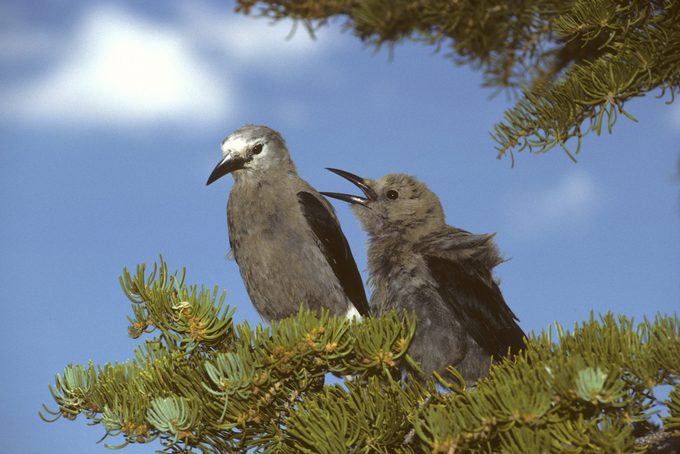
The prevalent seed supply allows Clark’s nutcrackers to mate earlier than most other birds, starting around late winter. “They nest in really remote areas in late winter and early spring,” Taza says.
Their 12-inch-wide twig nests are built anywhere from 8 to 60 feet high, tucked in the branches of conifer trees.
“We do know that when they’re a mated pair they perform courtship rituals all year,” Taza says. This involves carrying sticks, making unique calls to one another and swooping at each other.
Hilary points out that the male develops a full brood patch, which helps with egg incubation. “He will assist the female in that way,” she says, since one parent can retrieve food while the other broods the eggs.
Food availability, too, is critical for an early brood. Taza says they’ll nest near their seed caches and use this resource, along with early-season insects, to feed their young.
Look for the California scrub-jay on the west coast.
What Do Clark’s Nutcrackers Sound Like?
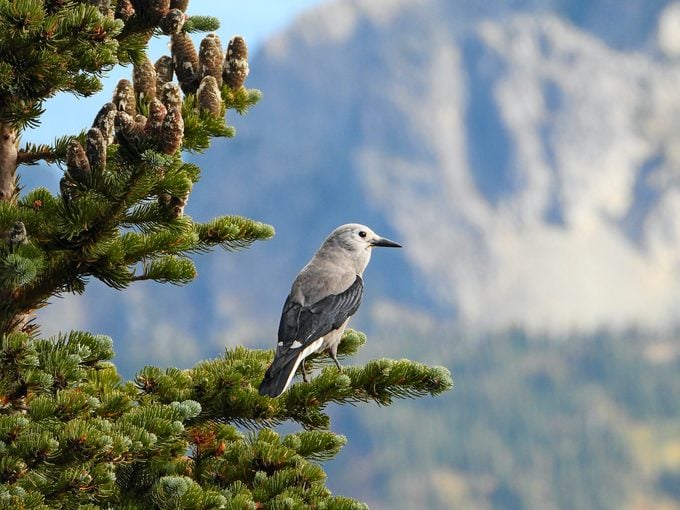
Vocal and gregarious, Clark’s nutcrackers make themselves known in the conifer forests of the mountainous West. Similar to related crows, Clark’s nutcrackers are better recognized by their various squawks and shrill calls.
“My wife and I were hiking along the ridgeline at Mount Rainier when a couple of playful Clark’s nutcrackers (above) flew up to take in the view as well. This picture reminds me to take a moment and appreciate the natural world,” says William RouLaine of Gig Harbor, Washington.
Do crow sightings have a special meaning?
How to Attract Clark’s Nutcrackers to Feeders
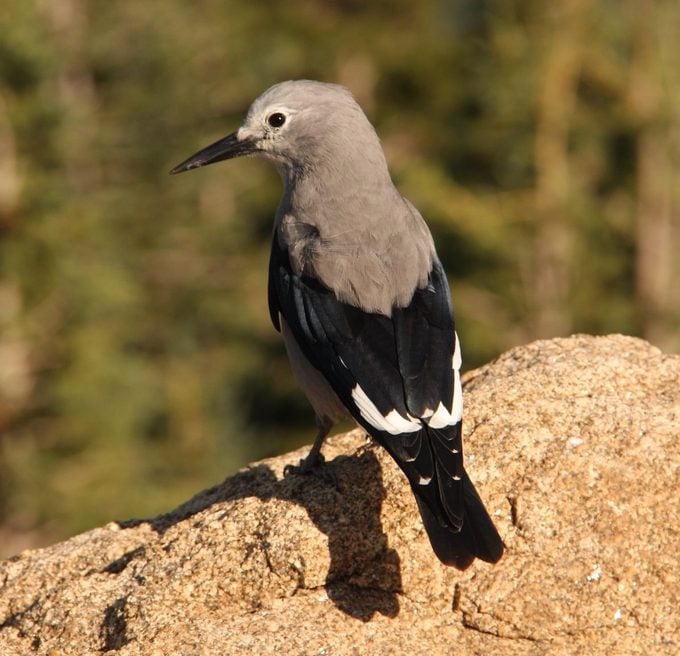
These birds sometimes visit backyard feeders where people live in higher elevations.
Hilary says, “Growing up in Helena, Montana, we had a lot of Clark’s nutcrackers at our feeders. They would come in and feed in family groups. They really loved the peanut butter logs.”
Offering whole peanuts and suet is another excellent way to enjoy watching these resourceful members of the jay family when they’re in your area.
Next, find out why the black-billed magpie is a perfect combo of brains and beauty.




















